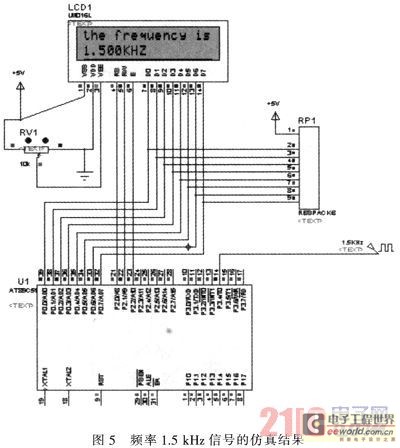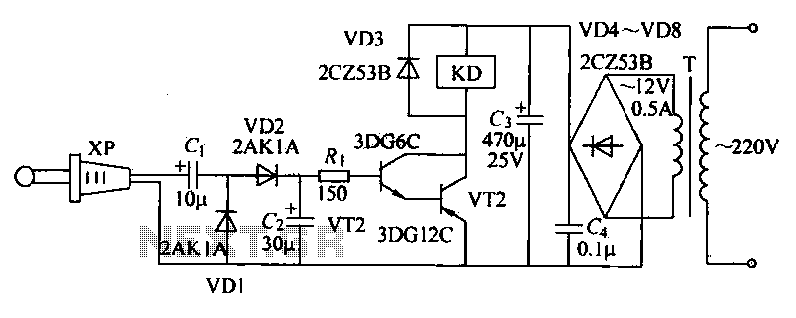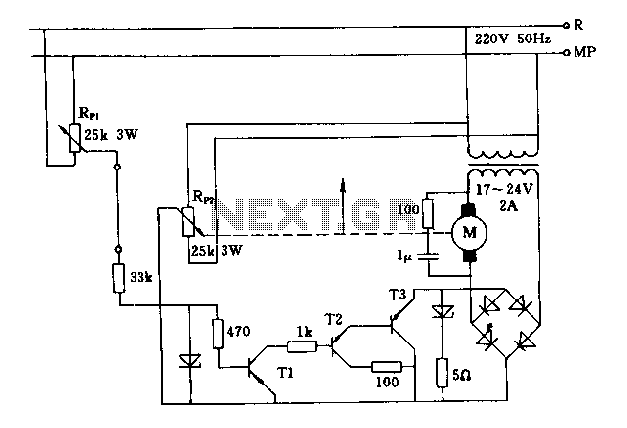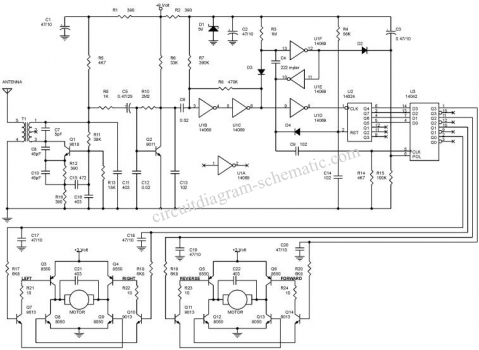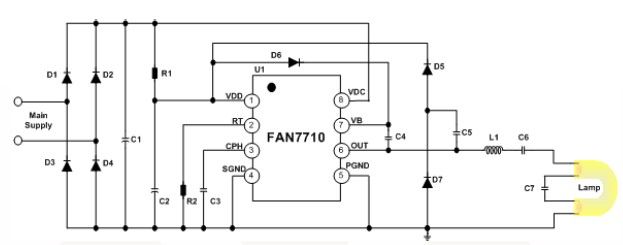
remote control
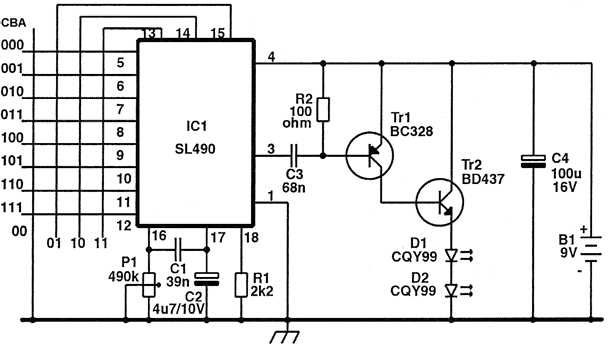
Each keypad button generates a 5-bit binary code, which is transmitted by IC1 to the IR LEDs through diodes D1 and D2. The code is structured from six pulses interspersed with five gaps. The pulse position modulation (PPM) technique is employed for data transfer, where data information is conveyed during the gaps. A long gap represents a logic 0, while a short gap signifies a logic 1. The SL490 includes an automatic standby circuitry. When the buttons remain unused for a certain period, the IC switches to standby mode, reducing the standby current to 6 µA.
The circuit operates by utilizing a keypad interface that allows users to input commands through individual buttons. Each button press activates a corresponding binary code, which is then processed by IC1. The IC encodes the button press into a series of pulses that represent the binary values. This encoding employs the PPM technique, where the timing of the gaps between the pulses carries the information. The longer the gap, the more likely it indicates a binary zero, while shorter gaps correspond to binary ones.
The IR LEDs, connected via diodes D1 and D2, serve as the transmission medium for the encoded signals. These diodes ensure that the signals are directed appropriately and help in modulating the light output to transmit the binary information effectively to a receiving unit.
The inclusion of the SL490 with its automatic standby feature enhances the circuit's efficiency. When the keypad remains idle for a predetermined duration, the SL490 reduces its power consumption by entering a low-power standby mode, drawing only 6 µA. This feature is essential for battery-operated devices, as it prolongs battery life by minimizing energy consumption during periods of inactivity.
Overall, this circuit design exemplifies an efficient method for encoding and transmitting data wirelessly using infrared signals, leveraging pulse position modulation for effective communication while maintaining low power consumption during standby periods.Every key pad button generates 5 bit binary code and IC1 sends this code to the IR leds through D1 and D2 diodes. Code is shaped from 6 pulses with 5 gaps. Pulse position modulation PPM technique is used for transferring data. Data information occurs at gaps. For logic 0, long gap, for logic 1 short gap is generated. SL490 includes an auto sta nd-by circuitry. When the buttons are not used for a while, IC will swich to stand-by mode and stand by current will be 6uA. 🔗 External reference
The circuit operates by utilizing a keypad interface that allows users to input commands through individual buttons. Each button press activates a corresponding binary code, which is then processed by IC1. The IC encodes the button press into a series of pulses that represent the binary values. This encoding employs the PPM technique, where the timing of the gaps between the pulses carries the information. The longer the gap, the more likely it indicates a binary zero, while shorter gaps correspond to binary ones.
The IR LEDs, connected via diodes D1 and D2, serve as the transmission medium for the encoded signals. These diodes ensure that the signals are directed appropriately and help in modulating the light output to transmit the binary information effectively to a receiving unit.
The inclusion of the SL490 with its automatic standby feature enhances the circuit's efficiency. When the keypad remains idle for a predetermined duration, the SL490 reduces its power consumption by entering a low-power standby mode, drawing only 6 µA. This feature is essential for battery-operated devices, as it prolongs battery life by minimizing energy consumption during periods of inactivity.
Overall, this circuit design exemplifies an efficient method for encoding and transmitting data wirelessly using infrared signals, leveraging pulse position modulation for effective communication while maintaining low power consumption during standby periods.Every key pad button generates 5 bit binary code and IC1 sends this code to the IR leds through D1 and D2 diodes. Code is shaped from 6 pulses with 5 gaps. Pulse position modulation PPM technique is used for transferring data. Data information occurs at gaps. For logic 0, long gap, for logic 1 short gap is generated. SL490 includes an auto sta nd-by circuitry. When the buttons are not used for a while, IC will swich to stand-by mode and stand by current will be 6uA. 🔗 External reference
